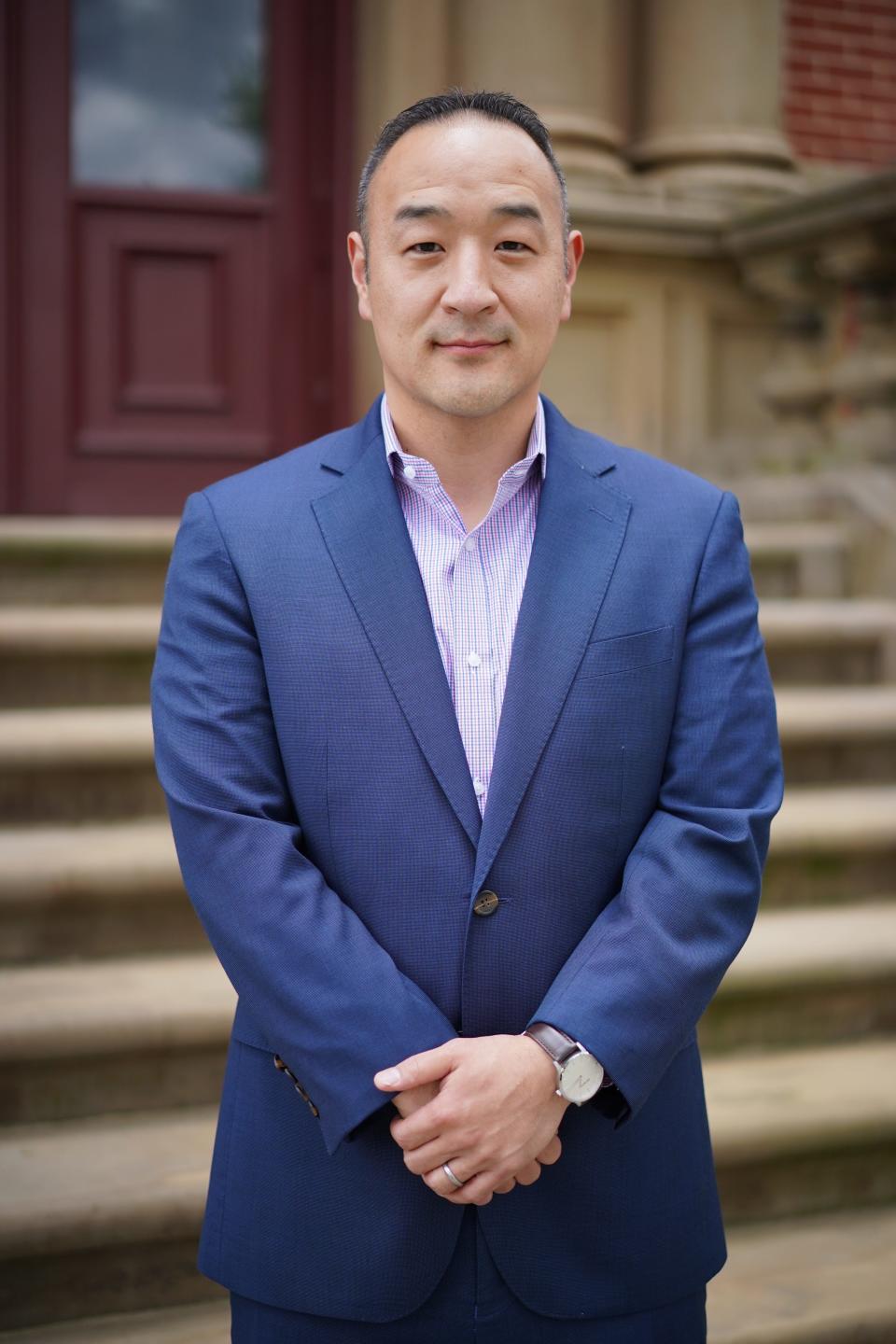NJ and opponents will try mediation before suit alleging school segregation goes to trial
- Oops!Something went wrong.Please try again later.
A lawsuit challenging New Jersey’s decades-old model of assigning students to public schools based on their town of residence, or ZIP code, is moving into mediation, with both sides coming to the table to see if they can resolve their differences.
After a Superior Court judge ruled in October that the state must address unofficial segregation in its school districts, the state Attorney General’s Office, which is fighting the case on behalf of the state Department of Education, invited plaintiffs to work out a solution and avoid going to trial.
The 2018 lawsuit, brought by various groups including the Latino Action Network and the NAACP, argued that public schools are segregated by race and the state has failed to remedy this situation.
Lawyers on both sides will meet Tuesday for the first in a series of discussions as part of a confidential mediation process. The move was welcomed by all three parties involved with the lawsuit: the state, the plaintiffs and the New Jersey Public Charter Schools Association, which joined the case as a co-defendant with the state.
Barry Albin, a retired state Supreme Court associate justice, will serve as mediator. The courts have given the groups until Jan. 16 to come to an agreement.
“We are pleased to accept the state’s invitation to undertake a confidential mediation process,” said Lawrence Lustberg, attorney for the plaintiffs, “and are hopeful that it will result in an effective solution to New Jersey’s longstanding problem of school segregation more expeditiously than would be the case if it is necessary to continue the ongoing litigation.”
A spokesperson for the Office of the Attorney General said, “The state is committed to providing a thorough and efficient education to every student and recognizes the innumerable benefits of a diverse school environment. The parties have entered into a confidential mediation process in the hope of resolving this complex and difficult matter.”
Ruling stopped short of proposing remedy
An October ruling from Superior Court Judge Robert Lougy agreed with the plaintiffs that the state has a duty to correct "de facto" segregation in schools — meaning segregation that is not the result of official policy — but it stopped short of issuing orders or proposing a remedy.
Lustberg and Latino Action Network welcomed the ruling at the time, saying the court agreed that segregation is a problem in public schools, and that the state has a constitutional obligation to fix it.
Mediation is a “positive” step, considering the judge did not issue a stronger ruling in their favor, said Javier Robles, president of the Latino Action Network. Lougy did not issue summary judgment, which would have indicated undisputable arguments from the winning party.
More: Some praise ruling criticizing NJ school segregation. But what happens now?
Science of reading: Remember phonics? It's back in style as NJ schools fight pandemic learning loss
““We would have liked to see a more direct outcome" from the lawsuit, Robles said. “But the state has called us for talks, and that is a positive thing. Segregation is not a problem that a single district or organization or parents can solve — it has to be solved by taxpayers, by the government and by the plaintiffs.
"And that is the best way to do this, with community effort and input … this is a conversation for the whole state of New Jersey, not just Latino Action Network,” Robles said.
Neither Lustberg nor the state said what demands were open to compromise.
Stop assigning students based on where they live
A key demand from the plaintiffs was that the state stop the practice of assigning students to public schools based on where they reside. The plaintiffs also asked the court to order the Legislature and the Education Department to adopt a “replacement assignment methodology” to determine how children in New Jersey would be assigned to schools. The ruling did not grant these requests.
To the question of why taxpayers in high-income towns should give up a chance for their children to attend those schools, Robles said the better question is whether low-income kids are also getting that opportunity. “Poor people pay taxes, too. We are a diverse state, but not when it comes to classrooms,” he said.
Ensuring that poverty and housing costs are not linked to where Hispanic children go to school is key to ensuring that “the state is producing the best students it can produce among that group,” Robles said.
Given the rising numbers of Hispanic students, “it is an important question that’s going to affect us globally, in terms of the quality of American students,” he said. Both Asian and Hispanic populations in the United States are expected to double between 2016 and 2060. Asians would make up around 9% of the total American population in 2060, but Hispanics would be a larger proportion, at around 37%.
Could charter schools play a role?
The state charter school association had a win in Lougy’s ruling. The plaintiffs alleged that charter schools contributed to segregation by prioritizing enrolling local students, but charter school attorneys argued that their schools were uniquely positioned to dismantle segregation, because they also admit students from outside municipal boundaries.
“Our feeling regarding mediation is very positive. Justice Albin is universally admired, and we think he’s an honest broker that can help the parties bridge different perspectives,” said Harry Lee, president of the New Jersey Public Charter Schools Association.

“I think we can all agree, including the state, that there is a need for more diversity in New Jersey schools, and our position is that charter schools can be a part of that solution because of the municipal boundary challenge,” Lee said.
As long as municipalities are not racially balanced, schools will not be, either, Lee said. Since the charter model brings kids from across municipal boundaries, they can overcome “a structural impediment to integration, which is neighborhood segregation,” Lee said.
Some lawmakers have taken note of the lawsuit and its implications. The case might “take away” New Jerseyans’ right to send their children to neighborhood schools if it goes to trial, state Sen. Jon Bramnick, R-Union, said in a statement issued in October.

The governor’s office has not commented.
Solutions that unlink schools from students’ home addresses would have political implications, given New Jersey’s many tiny school districts and the local control residents are accustomed to exercising over their boards of education.
Lougy ruled that even though the state had systematically failed to correct segregation, it had done nothing unlawful in implementing its residency laws to operate schools.
This article originally appeared on NorthJersey.com: Lawsuit alleging NJ K-12 schools are segregated enters mediation

